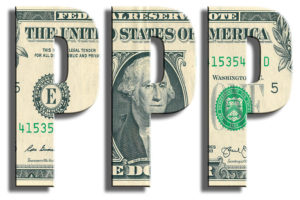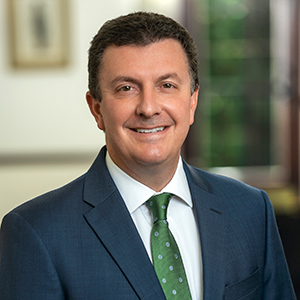New Legislation Adds Flexibility for Paycheck Protection Program Borrowers
 Responding to concerns, complaints, and frustrations expressed by Paycheck Protection Program (PPP) borrowers, the Paycheck Protection Program Flexibility Act of 2020 (PPPFA) was signed into law on June 5, 2020. As the name of the legislation implies, it will provide much-needed flexibility for business owners who may be struggling with some of the more confusing and burdensome aspects of the program.
Responding to concerns, complaints, and frustrations expressed by Paycheck Protection Program (PPP) borrowers, the Paycheck Protection Program Flexibility Act of 2020 (PPPFA) was signed into law on June 5, 2020. As the name of the legislation implies, it will provide much-needed flexibility for business owners who may be struggling with some of the more confusing and burdensome aspects of the program.
Specifically, the PPPFA makes modifications that will benefit borrowers and allow them to maximize the benefits they receive from these essential loans:
- Extension of Loan Term. For any unforgiven loan proceeds, the PPPFA increases the loan term from two years to a minimum of five years. For existing loans that currently have a two-year maturity, borrowers and lenders can modify that term by mutual agreement
- Revision of Deferment Period. The act revises the deferment period for loan repayment, replacing the original six-month deferment with a longer period for those borrowers who do not elect to continue with their original eight-week Covered Period as discussed below. Under the PPPFA, the first payment on unforgiven funds will now be deferred until the Small Business Administration (SBA) pays the lender the forgiven amount. Recall that with respect to loan forgiveness, lenders currently have 60 days from the receipt of a forgiveness application to decide whether and how much of a loan to forgive, and the SBA has an additional 90 days thereafter to do the same. This means that a borrower could theoretically have until May of 2021, based on the Covered Period now extending to December 31, 2020, to make its first PPP loan payment. Additionally, the PPPFA provides that a borrower who fails to apply for forgiveness within ten months after the last day of the Covered Period need not make payments of principal, interest, and fees until the conclusion of those ten months.
- Extension of Covered Period The PPPFA extends the eight-week Covered Period to the earlier of:
-
- 24 weeks from the date of loan origination, or
- December 31, 2020.
Borrowers who have already received loan proceeds as of the PPPFA’s enactment date (June 5) can elect to continue with a Covered Period that ends eight weeks after the loan’s origination date;
- Safe Harbor Extended. The safe harbor deadline by which employers must rehire workers and restore any wages reduced by more than 25 percent is now extended from June 30, 2020, to December 31, 2020.
- New Rehiring Safe Harbors Added. The legislation adds new safe harbors that preserve forgiveness even if a business cannot restore employee headcount. During the period from February 15, 2020, to December 31, 2020, PPP loan forgiveness will not be negatively impacted by a proportional reduction in the number of full-time equivalent employees (40 hours per week, per earlier guidance) if a borrower, in good faith, demonstrates:
-
- An inability to rehire individuals employed by the borrower as of February 15, 2020, and
- An inability to hire similarly qualified employees for unfilled positions on or before December 31, 2020, or
- An inability to return to the same level of business activity at which such business was operating at before February 15, 2020, due to compliance with sanitation, social distancing, or any other worker or customer safety requirements related to COVID–19 between March 1, 2020, and December 31, 2020.
- Deferment of Social Security Taxes. Borrowers can now defer their employer share of Social Security taxes even if the borrower obtains PPP loan forgiveness. Half of the deferred Social Security taxes will be due in 2021, with the balance due in 2022.
- Percentage of Proceeds Used For Payroll Reduced, But There Is a Catch. The original PPP rules provide for partial loan forgiveness so long as business owners use at least 75 percent of PPP loan proceeds on payroll. The PPPFA, however, provides that there shall be no forgiveness at all, and the borrower will need to repay the entire loan, if the borrower does not use at least 60 percent of the proceeds for payroll expenses. Up to 40 percent of the loan may still be used for nonpayroll items such as interest on any covered mortgage obligation (without prepayment, or payment, of mortgage principal), interest on other borrower obligations, as well as any covered rent obligation or covered utility payment.
As has been the case since the inception of the Paycheck Protection Program, further guidance and clarification regarding these changes will undoubtedly be forthcoming. But the modifications to the program made by the PPPFA are certainly positive developments for many borrowers, permitting them to stretch their loans further and increasing the availability of loan forgiveness.
One thing the PPPFA did not change, however, is the deadline for applying for a PPP loan. The SBA will not approve any new PPP loans after June 30, 2020. And the PPPFA does not address the deductibility of business expenses paid with forgiven PPP loan proceeds despite controversial IRS guidance concluding that such expenses are not deductible.
PPP Questions? We Have Answers.
If you have questions regarding the PPPFA or the Paycheck Protection Program generally, or have any other concerns or issues related to the COVID-19 pandemic, please contact the Business Law Practice Group at Kreis Enderle today.
